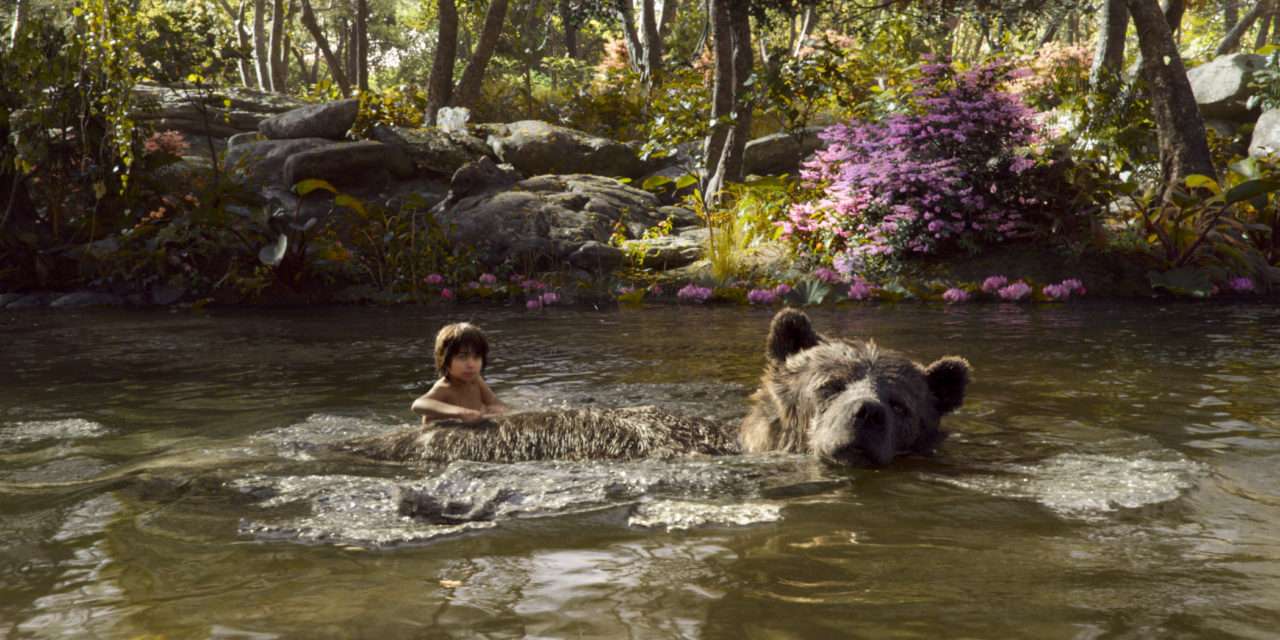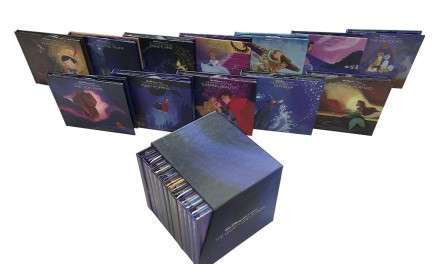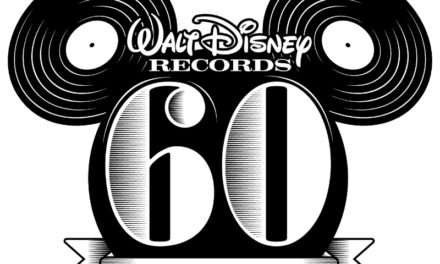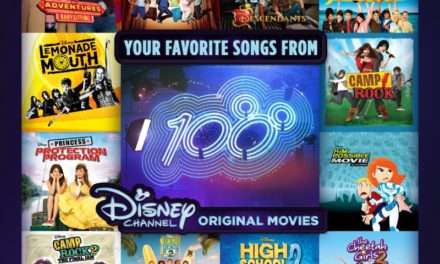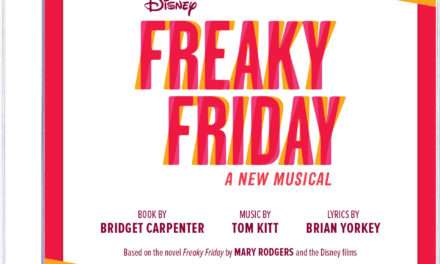Jon Favreau’s The Jungle Book, which opens today in eye-popping 3D, is an absolute blast. It’s a retelling of both the classic Rudyard Kipling tale and a canny update of the beloved 1967 animated classic. In this version, young Mowgli (Neel Sethi) is growing up and trying to figure out his place in the jungle. As the only human character, he’s surrounded by a starry cast of voice actors that includes Sir Ben Kingsley (Bagheera), Bill Murray (Baloo), Idris Elba (Shere Khan), Scarlett Johansson (Kaa), and Christopher Walken (King Louie), all brought to life through cutting-edge computer animation.
When I spoke to Jon Favreau about the film, he was about to leave for a special event at Disneyland and I couldn’t help but notice that his phone case featured the iconic wallpaper of the Haunted Mansion. He really is a huge fan of Disney and walked me through all of the ways that Disney history played a part in the making of this truly incredible film. (And we didn’t even get to talk about hisFantasia-inspired sound design!) Here’s what I learned:
1. The 3D of the film, and the castle, were a tribute to the multi-plane camera system.

Favreau said that one of his “rules” for making The Jungle Book was “let’s treat the 3D like multi-plane. Let’s be as gimmicky as Walt would have been—but not more.” The multi-plane camera is a special camera used to create a sense of dimensional space–of a camera moving through a set, instead of one just taking photos of a series of still images. Disney had a special version of the system developed, which was used first in a Silly Symphony called “The Old Mill” and later in Snow White and the Seven Dwarfs. Favreau went on: “There are tremendous shots in Pinocchio and Bambi where the multi-plane was a new technology and they were using it to show off, and that was the 3D of its day. And so we were studying that very closely and became very fascinated with the multi-plane and what went into it and the artistry and ingenuity.” This aesthetic philosophy extended to the movie’s treatment of the main castle logo. “I got the idea, ‘Let’s do the opening logo, and instead of doing a super high-tech one, let’s have a hand-painted, cel-animated multi-plane logo,’” Favreau said. “And not only that but ‘Let’s make the kingdom behind the castle have elements from what the live action version would have been,’ so it was almost like a little taste of what’s back there.”
2. The end of the opening logo is borrowed from Bambi.

At the end of the castle logo shot, the camera pulls back and goes through the lush foliage of the jungle. It turns out that this was a moment borrowed fromanother Disney animated classic. “We transition into the photo-real by the end of the shot, and then we borrowed that shot from Bambi,” Favreau said.
3. The book at the end of the movie is the actual, original Jungle Book.

First to let you know that this isn’t a spoiler (don’t worry): At the end of The Jungle Book, the physical Jungle Book book closes, which is a bookend (literally) to the original film in a really cool way. “At the end of the movie we found the book from the original Jungle Book in the archives, and so that book that opens at the beginning of [the 1967] Jungle Book, I noticed never closes at the end ofJungle Book,” Favreau explained. “Here we take the same book, the same blue velvet background and we close the book as though to, I think, pay homage to and maybe feel like we’re completing that chapter.” How insanely cool is that?
4. The film sought to capture the spirit of the original Jungle Book’s animation.

It’s very clear from talking with Favreau that he loves Disney animation and is well versed in the history of the company. When it comes to the original Jungle Book, he knew exactly what he was trying to retain for his big screen reboot. “That was the high water mark in many ways for character animation. You had the Nine Old Men, and they were hitting the high water mark for emotional character animation that is drawn upon and you can see it even in The Lion King, you see reference to that animation style. You can see it in Zootopia too,” Favreau said. “So it was a very important film from an animation standpoint, but it wasn’t as lush as a texture, of a cinematic texture, as was the big five.” Watching this newJungle Book, with its amazing character animation (you might just have a new favorite Baloo, thanks to Bill Murray and a team of creative geniuses that brought him to life), you can see that they were really energized by that original classic.
6. It also captures the spirit of additional Disney Animated Classics.

The Jungle Book’s inspiration from animated Disney classics didn’t begin and end with the 1967 original. As Favreau explained: “We went back to films likeBambi to see how they best used elements, because I wanted to use different elements in in this.” He went on: “I wanted air, fire, water, and earth, and Bambiuses seasons and weather, and using different types of day—opportunities that this filmmaking style allows you. So we looked at films like Bambi, we looked at films like The Lion King.” It’s true–throughout The Jungle Book, you can sense the legacy of these earlier films and, thanks to the nature of the story (roughly broken up into vignettes), the changing seasons effect is vital and dazzlingly realized.
7. Tonal cues came from classic Disney movies.

As Favreau has said repeatedly, this isn’t a G-rated movie for little kids; it’s a PG-rated adventure for everyone. And the guiding voice behind deciding what the film should include was Walt Disney’s itself. “How scary would Walt make it?” Favreau asked himself and his creative partners. “How do you mix humor and music with excitement? But if you look at who Snow White and the Seven Dwarfswas geared for — adults like the film, teenagers, children. And so, we took a lot of tonal cues from the traditional Walt Disney movies.” There are moments whenThe Jungle Book is very intense, but it’s ultimately a film that everyone can enjoy. Just like a great Walt Disney movie should be.
8. Mark Ronson helped reinvent a classic Sherman Brothers song.

Richard Sherman, who co-wrote many of the original tunes from The Jungle Book (and is a true Disney Legend, given his contributions to various areas of the company), returned to help Favreau with this new iteration of the classic tale. But Favreau had another musical partner in Grammy-winning producer Mark Ronson. “I reached out to him because we had recorded Scarlett [Johansson, who plays Kaa] singing ‘Trust in Me,’ not knowing what we would do with it,” Favreau explained. “I had just seen the Amy documentary—and it was something that Mark Ronson had done on ‘Back to Black’ with Amy Winehouse, and it felt like it was a throwback to the sixties, with the smokiness of Scarlett’s voice, there might be something interesting. When I reached out to Mark, I said, ‘Look, we’re coming to the end of this thing. This is a long shot, we recorded ‘Trust in Me’ with Scarlett, would you be interested?’ I sent him what we had and he sparked to it. And then on top of that he said, ‘I really want an orchestral thing, too,’ and we were still recording with John Debney, and I said, ‘Well, we have an orchestra. We’re scoring now.’ So he came out and we laid another track on top of it.”
9. Pixar Animation Studios helped with the end credits.

One of the things I noticed when sitting through the credits, was that there was a special thanks to Mark Andrews, the talented Pixar artist who co-directed Braveand co-wrote John Carter. When I asked Favreau what this was about, he gave a surprising answer: Pixar helped out in a really fun sequence that plays over the closing credits, where the Jungle Book book gets reopened and all sorts of animals come spilling out. “So the end sequence, when the book opens up, Pixar pitched ideas of what to have at our end credit title sequence,” Favreau said, adding that Pixar’s storied Brain Trust also assisted in the story for The Jungle Book. “So they were very, very helpful—Pixar could not have been more collaborative, and I’m a huge fan. It’s as close as I’ll ever come to working on a Pixar movie because it’s such an enclosed ecosystem. I don’t know if I’ll ever get to actually make a full movie with them, but to collaborate with them on this was a huge treat and a dream come true.” So yes, stay through the credits and you’ll get a Pixar-assisted treat! Also interesting to keep in mind that this is the second live-action Disney film that Pixar has helped with. Last summer they created a retro animated prologue that ran in front of select screenings of Brad Bird’s Tomorrowland.
Watching The Jungle Book, you can feel all of these references, homages, and callbacks, even if you don’t immediately recognize them. They’re baked into the fabric of The Jungle Book in a way that just feels classically Disney, but totally contemporary and cutting-edge. It’s a new classic, through and through.

